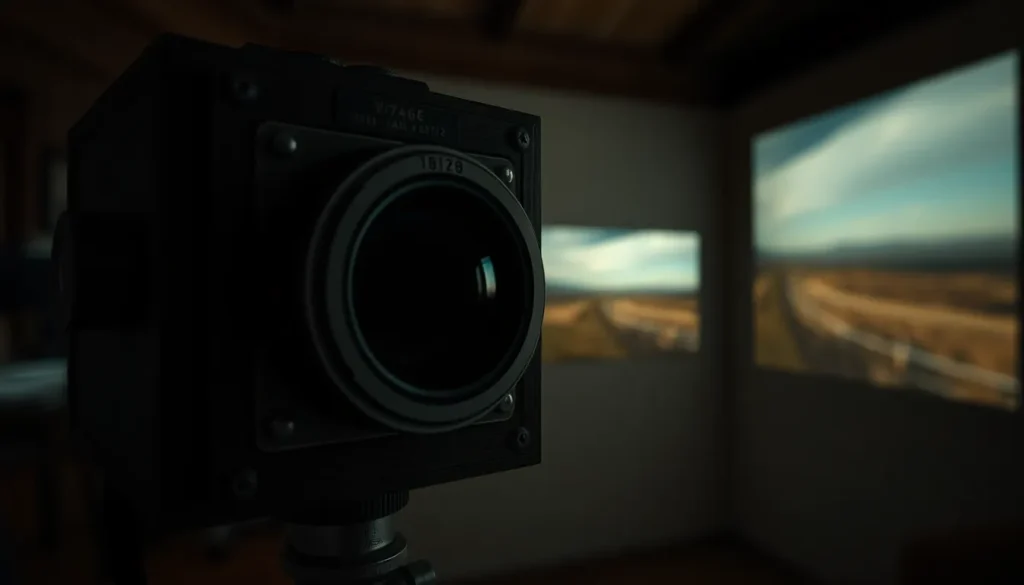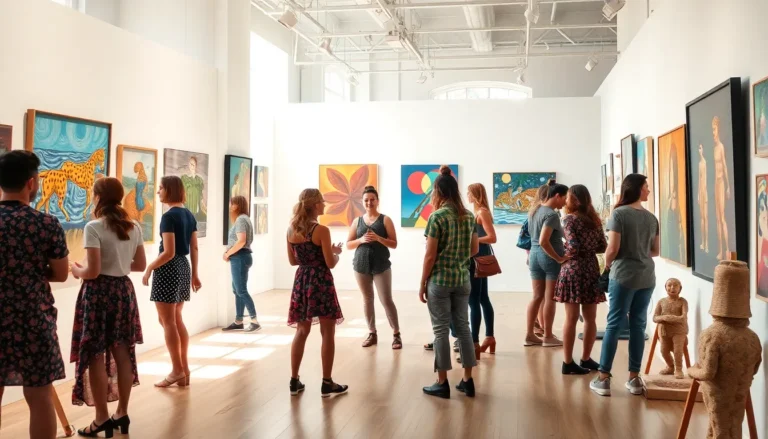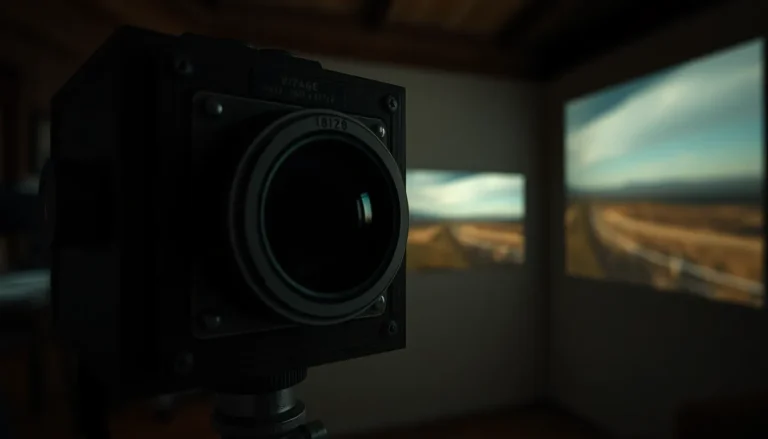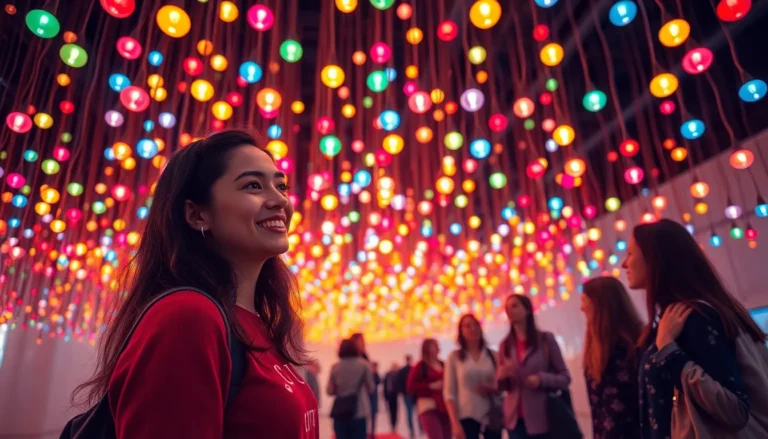Table of Contents
ToggleFrom ancient cave paintings to the latest smartphone snaps, photography has evolved into a captivating art form that tells stories and captures moments like no other medium. Imagine a world where memories fade without a trace, where the only proof of a family vacation is a fading recollection. Thankfully, photography swoops in like a superhero, preserving those precious moments for generations to come.
Overview of Photography History
Photography’s journey began in the early 19th century with the invention of the camera obscura. This device, used by artists for centuries, projected an image of its surroundings onto a surface. In 1826, Joseph Nicéphore Niépce created the first permanent photograph, titled “View from the Window at Le Gras.” It required eight hours of exposure time, showcasing the technological limitations of the era.
Between 1839 and 1888, significant advancements occurred. Louis Daguerre introduced the daguerreotype, making photography accessible to the public. This process reduced exposure time to around 30 minutes. In 1851, Frederick Scott Archer presented the wet plate collodion process, allowing detailed images to be produced more efficiently.
The introduction of roll film by George Eastman in 1888 revolutionized photography. This development made it easier for individuals to take photographs, marking the start of snapshot culture. Cameras became more portable, encouraging amateur photographers to document everyday life.
During the 20th century, photography evolved further with the rise of color film. Kodachrome, introduced in the 1930s, allowed vibrant color images. The invention of the 35mm camera also contributed to the popularization of photography as an art form.
Digital photography emerged in the late 20th century, transforming how images are captured and shared. Compact digital cameras and smartphones enabled instant access to photography. Today, photography plays an essential role in communication and storytelling, illustrating its lasting importance in society.
Early Developments in Photography
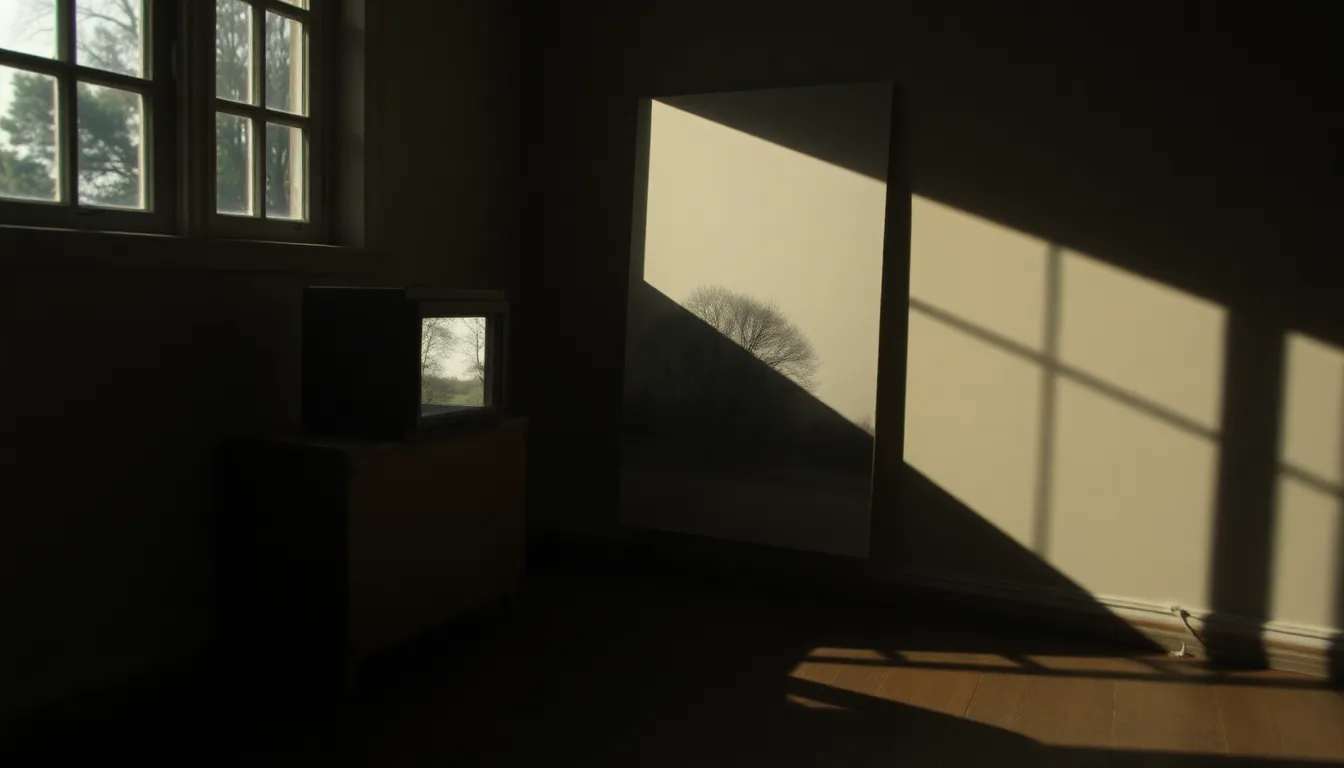
The early stages of photography laid the groundwork for its transformative journey. Innovations during this time paved the way for modern techniques.
Invention of the Camera Obscura
The camera obscura emerged as a pivotal invention in the realm of visual representation. This device featured a darkened room or box with a small aperture on one side. Light streamed through the aperture, projecting an inverted image of the outside world onto the opposite surface. Artists utilized camera obscura for accurate perspective in their paintings. By the 17th century, it had gained popularity among early visionaries exploring light and shadow. Its principle prefigured the mechanics of future cameras, influencing both art and science.
Early Photographic Techniques
Early photographic techniques built upon foundational concepts from the camera obscura. In 1826, Joseph Nicéphore Niépce captured the first permanent photograph using a bitumen-coated pewter plate. This moment marked a shift towards practical photography. Following this, Louis Daguerre introduced the daguerreotype in 1839. This process utilized silver-plated copper and required long exposure times. Frederick Scott Archer soon advanced the field with wet plate collodion processes. This increased accessibility and reduced exposure times, allowing for greater experimentation. Each advancement contributed to a burgeoning desire to document the world through photography.
Evolution of Photographic Processes
Photography evolved significantly through various innovative processes that shaped its history and accessibility. Each advancement contributed to how photography is practiced and perceived today.
Daguerreotype and Its Impact
The daguerreotype emerged in 1839, revolutionizing photography with its detailed images on silver-coated copper plates. Long exposure times posed challenges for photographers, yet the clarity achieved marked a milestone for the medium. Artists and enthusiasts alike embraced this process, celebrating its ability to capture likenesses with remarkable precision. The daguerreotype’s popularity cemented photography’s role in society, prompting public interest in this new art form. Its influence extended beyond artistic circles, impacting social documentation and contributing to the development of photography as an important historical record.
Introduction of Film Photography
Film photography debuted in the late 19th century, changing the landscape and accessibility of image capture. George Eastman’s introduction of roll film in 1888 made photography more user-friendly, allowing anyone to take snapshots. The emergence of film technology led to advancements in camera design, promoting a culture of casual photography. Color film’s development in the mid-20th century further enhanced photographic expression, providing a vibrant alternative to monochrome. Film photography laid the foundation for modern techniques, inspiring generations to explore creativity through the lens.
Modern Photography Innovations
Modern photography innovations have transformed the way images are captured and shared, emphasizing convenience and creativity. Digital advancements and smartphone technology have played critical roles in this evolution.
Digital Photography Revolution
Digital photography revolutionized image capture by eliminating the need for film. Sensors replaced traditional chemical processes, allowing for immediate image review. This shift enabled photographers to experiment without the constraints of developing costs. Storage capacity increased dramatically, permitting thousands of images to be stored on small memory cards. Editing software emerged, enhancing creativity through advanced manipulation options. The affordability of digital cameras and lenses also broadened access to photography, encouraging both amateurs and professionals to capture high-quality images.
Smartphone Photography Trends
Smartphone photography trends highlight the importance of mobile devices in modern image capture. With built-in cameras continually improving, smartphones now rival traditional cameras in quality. Features such as optical zoom and low-light capabilities have made them versatile tools for enthusiasts and professionals alike. Social media platforms have fueled a culture of immediate sharing, prompting users to engage with photography on a personal level. Additionally, editing apps have simplified post-processing, empowering users to enhance their photos swiftly. This accessibility has democratized photography, making it an integral part of daily communication and expression.
Influence of Photography on Society
Photography significantly impacts society by shaping art, culture, journalism, and personal expression. It serves as a vital medium for recording events, emotions, and narratives.
Art and Culture
Influencing the art world, photography provides artists with new creative avenues. Visual storytelling takes on enhanced dimensions through diverse styles and techniques. Artists like Ansel Adams and Cindy Sherman leverage photography to widen perceptions of beauty and identity. Cultural documentation also benefits from photographic archives, preserving diverse traditions and moments in time. Numerous photography exhibitions gain traction globally, bringing attention to pressing social issues. Artists utilize this medium to challenge societal norms, provoke thought, and inspire dialogues.
Journalism and Documentary Photography
Journalism relies heavily on photography to uncover and report stories. Documenting real-life events, photographers like Dorothea Lange and Sebastião Salgado expose societal injustices. Images capture the human experience, often evoking emotional responses and prompting public discourse. Moreover, documentary photography informs audiences about critical global issues, shaping opinions and encouraging activism. Photojournalism maintains its relevance in the digital age, guiding discussions through powerful visual narratives. Visual elements enhance news articles, allowing readers to engage more deeply with the content.
Photography’s journey from primitive cave paintings to advanced digital techniques showcases its profound impact on society. This art form transcends mere image capture; it serves as a powerful means of communication and storytelling. As technology continues to evolve, photography remains a vital tool for personal expression and cultural documentation. The accessibility of modern photography encourages creativity among all, from seasoned professionals to casual enthusiasts. Its role in shaping art, journalism, and social narratives highlights the importance of preserving moments that define human experience. Through the lens, photographers not only capture memories but also influence perceptions and inspire change.

